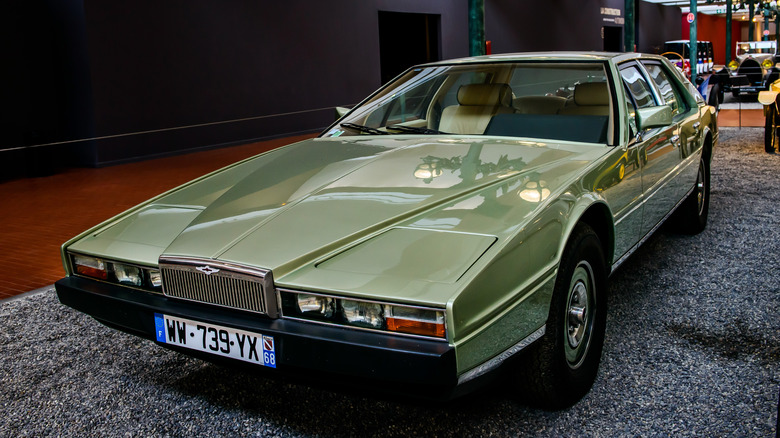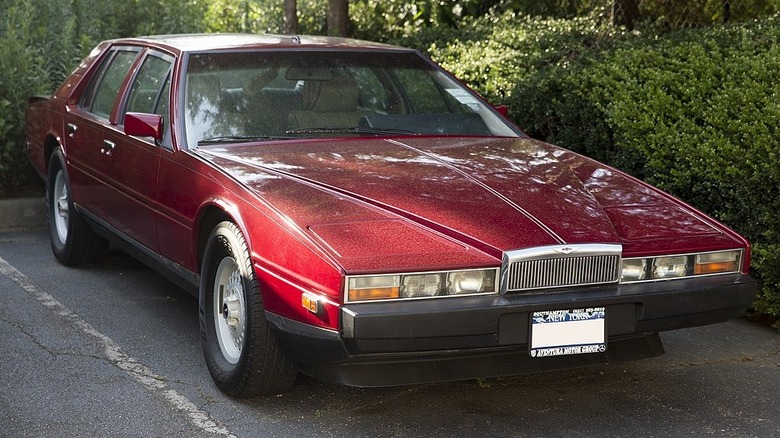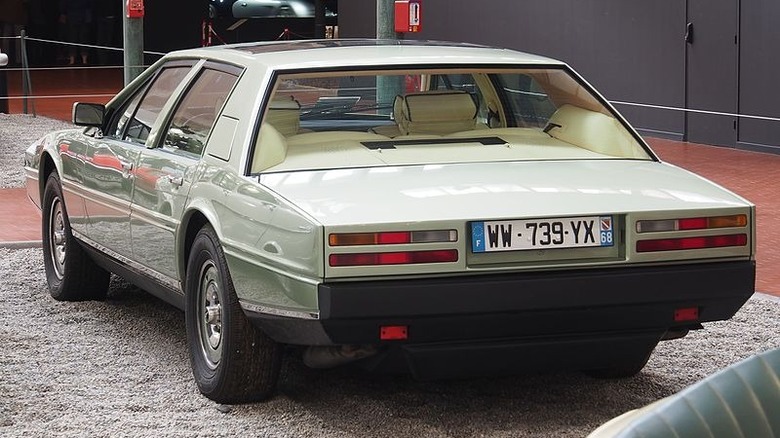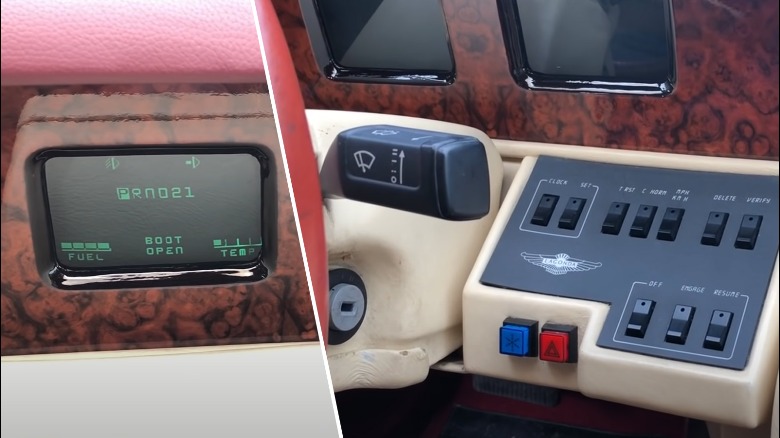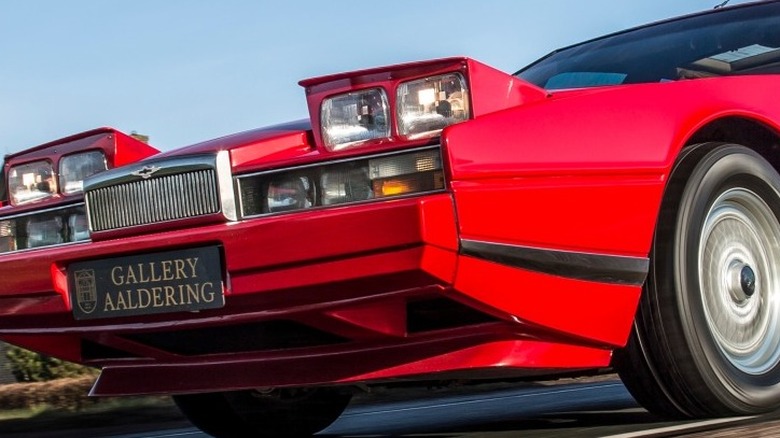The Truth About Aston Martin's Most Expensive Car Failure
British luxury automaker Aston Martin had its fair share of triumphs and tribulations. Known for exchanging hands more frequently than Italian automaker Maserati, financial difficulties kept knocking on Aston's Newport Pagnell facility doors throughout the 1930s. British industrialist David Brown entered the fray in 1947, saving Aston Martin from receivership and eventually churning out the iconic DB4 and DB5 that stole the hearts of countless sports car (and Hollywood) fans worldwide.
But alas, Aston's heyday was short-lived. Sir David Brown sold Aston Martin to Birmingham-based investment consortium Company Developments for almost nothing after paying off the company's debt rumored to be above £5-million, a tremendous sum considering Sir David paid only £20,500 to acquire Aston Martin.
Facing a worldwide recession and burgeoning California exhaust emission requirements, the new owners sold Aston to an American-British consortium led by Peter Sprague and Alan Curtis in 1975. The Series 1 Lagonda was already on sale during this time, a four-door and long-wheelbase version of the Aston Martin V8. It's the first car to wear the Lagonda badge after Aston Martin briefly flirted with the Lagonda Rapide from 1961 to 1964.
Aston Martin Lagonda Series II: Saint or sinner?
But alas, Aston Martin abandoned the project after building only seven Series 1 Lagondas. It had nothing to do with its styling or its 5.3-liter DOHC V8 with 280 horsepower and 301 pound-feet of torque, but rather its price tag: The Series I Lagonda commands a hefty £14,040 MSRP back in the day, making it dearer than most sport-luxury cars.
Aston's new owners were excited to realize an infusion of cash, so it asked British designer William Towns to redesign the Lagonda Series II from the ground-up. The radically new wedge design pays homage to wedge-shaped contemporaries like the Lamborghini Countach and Lotus Esprit. The out-of-this-world styling will accompany a state-of-the-art dashboard, the first car to come with a digital instrument panel from the factory.
Furthermore, it would come with a sumptuous interior wrapped in premium leather and traditionally-woven British wool. The Series II Lagonda is the future car, the potential savior of the Aston Martin brand, and huge crowds flocked to see the Series II prototype at the 1976 London Auto Show.
Expensive to buy, costly to make
After garnering 76 deposit checks (mainly for the Lagonda) at the auto show, the Lagonda development team went back to work to turn sci-fi into reality, particularly the vehicle's hi-tech, microprocessor-based digital dashboard. However, rumors suggest the fancy electronics cost four times as much as the development budget of the entire car, which probably accounts for the Lagonda's outrageous £20,000 base price (about $200,00 adjusted for inflation).
It would have been fine if the Lagonda's complicated cathode-ray screens and series of switch panels were reliable and easy to use, but it ended up being the exact opposite. Time Magazine included the 1976 Aston Martin Lagonda in its 50 Worst Cars of All Time list, branding the complicated electronics a "mechanical catastrophe."
No doubt, the Series II Lagonda is a gorgeous, exotic-looking four-door sedan, but beauty can't make up for its fuzzy electronic gremlins, especially considering its astronomical price.
Gas-guzzling V8 engine
It also seems the Series II Lagonda came at the wrong time. Development took place in the middle of the 1970s oil crisis when gas prices went through the roof and drivers were pining for more fuel-efficient and more reliable cars.
The events didn't bode well for the Lagonda's 5.3-liter DOHC V8 engine. It does produce 280 horsepower and 350 pound-feet of torque, but it drank more than a British pub full of drunks, guzzling fuel at an alarming 8.0 mpg on a good day – most likely due to its archaic Chrysler three-speed automatic gearbox.
Lagonda production continued until 1990, and the Series II eventually spawned a Series 3 and Series 4 Lagonda through the end of the 1980s. However, Aston Martin only sold 645 Lagondas over a 14-year production run, making it a massive and expensive failure.
In a dramatic turn of events, the Aston Martin Lagondas value has risen steadily over the years, and it's typical to expect from a vintage car with a low production run. If you have space in the garage (and a host of electronic diagnostic tools) for a quirky, vintage Aston Martin, the wedge-shaped Lagonda Series 2 to Series 4 are ripe for the picking.
